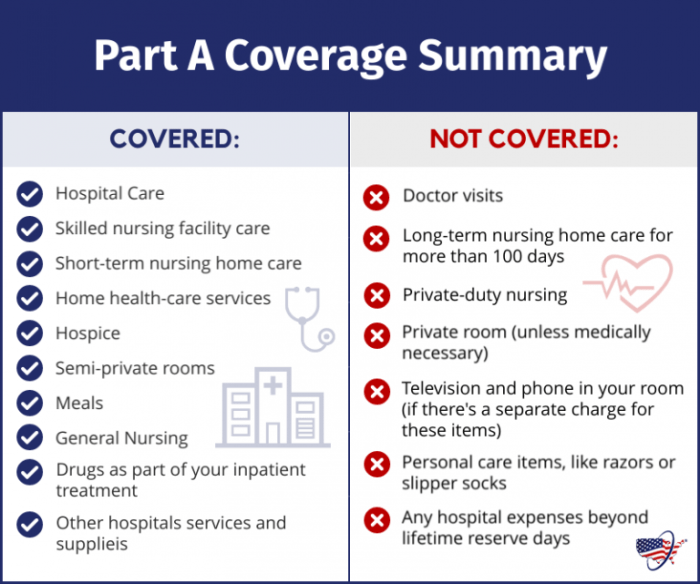As Coverage for outpatient services under health plans takes center stage, this opening passage beckons readers with a comprehensive overview of what outpatient services entail, their significance in health plans, and the common types covered. This sets the stage for a detailed exploration of the topic ahead.
Overview of Outpatient Services Coverage
Outpatient services are medical procedures or treatments that do not require an overnight stay in a hospital. These services are typically provided in a clinic, doctor’s office, or other healthcare facility, and patients can go home the same day.
Outpatient services coverage in health plans is essential as it helps individuals access necessary medical care without the need for hospitalization, which can be more costly and disruptive. By covering outpatient services, health plans promote preventive care, early intervention, and management of chronic conditions.
Examples of Common Outpatient Services Covered Under Health Plans:
- Primary care visits for routine check-ups and preventive care
- Diagnostic tests such as blood work, X-rays, and MRIs
- Outpatient surgeries, including minor procedures like cataract surgery or hernia repair
- Physical therapy sessions for rehabilitation or injury recovery
- Mental health services such as counseling or therapy sessions
Types of Outpatient Services Covered

Outpatient services covered under health plans encompass a wide range of medical treatments and procedures that do not require an overnight stay in a hospital. These services are crucial for preventive care, managing chronic conditions, and addressing acute illnesses promptly.
Basic Outpatient Services
- Primary care visits
- Laboratory tests
- X-rays and other diagnostic imaging
- Emergency room visits
- Vaccinations and immunizations
Specialized Outpatient Services
- Surgical procedures
- Physical therapy sessions
- Chemotherapy and other cancer treatments
- Mental health counseling and therapy
- Rehabilitation services
Having a variety of outpatient services covered is essential as it ensures that individuals have access to a comprehensive range of medical care without the need for hospitalization, promoting timely interventions and better health outcomes.
Limits and Restrictions: Coverage For Outpatient Services Under Health Plans
When it comes to coverage for outpatient services under health plans, there are often limits and restrictions that individuals need to be aware of. These limitations can impact the type and extent of care that can be received, potentially affecting the overall healthcare experience of the individual.
Pre-authorization Requirements
One common restriction in outpatient services coverage is the requirement for pre-authorization for certain procedures or treatments. This means that individuals may need to obtain approval from their insurance provider before undergoing specific outpatient services. Failure to obtain pre-authorization could result in the individual being responsible for the full cost of the service.
Visit or Dollar Limits
Some health plans may impose visit or dollar limits on outpatient services. This means that there is a maximum number of visits or a maximum amount of money that the insurance will cover for outpatient care within a certain period. Once these limits are reached, the individual may have to pay out-of-pocket for any additional services.
Network Restrictions
Another restriction that individuals may encounter is network restrictions. This means that coverage for outpatient services may only be provided if the services are received from healthcare providers within the insurance company’s network. Seeking services outside of the network could result in reduced coverage or no coverage at all.
Example Scenario, Coverage for outpatient services under health plans
For example, if an individual requires physical therapy as an outpatient service and their health plan has a visit limit of 20 visits per year, once they reach the 20-visit limit, they will have to pay for any additional visits out of pocket. This limitation can impact the individual’s ability to receive ongoing care and may result in discontinuation of therapy due to financial constraints.
Cost-sharing Mechanisms

Cost-sharing mechanisms play a crucial role in how individuals access outpatient services under health plans. These mechanisms determine the amount of money that individuals are required to pay out of pocket when utilizing these services.
With the rise of online resources, it’s easier than ever to compare health insurance plans online to find the best option for your needs. By utilizing these tools, you can easily compare coverage, costs, and benefits to make an informed decision. This can save you time and money in the long run, ensuring you have the right coverage for your health needs.
Copayments
Copayments are fixed amounts that individuals must pay for each outpatient service they receive. These fees are typically set at a specific dollar amount, such as $20 per doctor’s visit or $10 per prescription refill.
When it comes to planning for the future, it’s important to consider your dental and vision needs. Having dental and vision insurance plans in place can provide peace of mind and financial security. These plans offer coverage for routine check-ups, as well as unexpected emergencies, ensuring that you and your family’s oral and visual health are taken care of.
Coinsurance
Coinsurance involves individuals paying a percentage of the total cost of outpatient services. For example, if the coinsurance rate is 20%, the individual would be responsible for paying 20% of the total cost of the service, while the health plan covers the remaining 80%.
Deductibles
Deductibles are the amount of money individuals must pay out of pocket before their health plan starts covering the cost of outpatient services. Once the deductible is met, individuals typically only need to pay copayments or coinsurance for services.
Network Requirements
In the context of outpatient services coverage, provider networks play a crucial role in determining access to care and coverage options. Provider networks consist of healthcare professionals, facilities, and organizations that have contracted with a health insurance plan to provide services to its members.
Role of Provider Networks
Provider networks help health plans manage costs and ensure quality of care by negotiating rates with healthcare providers. By choosing to receive care from in-network providers, individuals can benefit from discounted rates and full coverage as per their health plan. On the other hand, out-of-network providers may result in higher out-of-pocket costs and limited coverage.
In-Network vs. Out-of-Network Providers
When individuals seek outpatient services from in-network providers, they typically pay lower out-of-pocket costs compared to out-of-network providers. Health plans often have a set network of providers that members are encouraged to use for optimal coverage. Out-of-network providers may result in higher deductibles, co-pays, or coinsurance, ultimately leading to increased financial burden on the individual.
Impact of Network Requirements on Access
For example, if a health plan has a limited network of mental health providers, individuals seeking therapy may face challenges accessing care. In rural areas where there are fewer in-network providers, individuals may have to travel long distances to receive covered services. Network requirements can significantly influence the accessibility and affordability of outpatient services for individuals depending on their geographical location and the scope of the provider network.
Preauthorization Processes

The preauthorization process for outpatient services plays a crucial role in ensuring that coverage is provided in a timely and efficient manner. By obtaining preauthorization, both the healthcare provider and the insurance company can align on the necessity of the services being rendered, helping to prevent any unnecessary delays or denials in coverage.
Importance of Preauthorization
- Preauthorization helps ensure that the outpatient services being requested are medically necessary and appropriate for the patient’s condition.
- It also helps in managing healthcare costs by avoiding unnecessary services that may not be covered under the health plan.
- By obtaining preauthorization, patients can have peace of mind knowing that their services will be covered by their insurance plan.
Examples of Situations Requiring Preauthorization
- Elective surgeries or procedures that are not considered emergencies may require preauthorization.
- Certain diagnostic tests or imaging studies may also need preauthorization before they can be performed.
- Specialist consultations or therapies that are outside of the primary care physician’s scope may require preauthorization as well.
In conclusion, the discussion on Coverage for outpatient services under health plans sheds light on the crucial aspects of coverage, limitations, cost-sharing mechanisms, network requirements, and preauthorization processes. This comprehensive guide aims to equip readers with a deeper understanding of how health plans address outpatient services, ensuring informed decisions and access to necessary care.
For expecting mothers, having health insurance coverage for maternity is crucial. These plans offer coverage for prenatal care, delivery, and postpartum care, ensuring that both the mother and baby receive the necessary medical attention. By having this coverage in place, you can focus on the joy of welcoming a new addition to your family without worrying about the financial burden.



